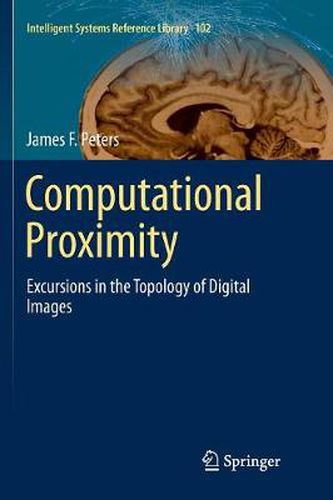Readings Newsletter
Become a Readings Member to make your shopping experience even easier.
Sign in or sign up for free!
You’re not far away from qualifying for FREE standard shipping within Australia
You’ve qualified for FREE standard shipping within Australia
The cart is loading…






This title is printed to order. This book may have been self-published. If so, we cannot guarantee the quality of the content. In the main most books will have gone through the editing process however some may not. We therefore suggest that you be aware of this before ordering this book. If in doubt check either the author or publisher’s details as we are unable to accept any returns unless they are faulty. Please contact us if you have any questions.
This book introduces computational proximity (CP) as an algorithmic approach to finding nonempty sets of points that are either close to each other or far apart. Typically in computational proximity, the book starts with some form of proximity space (topological space equipped with a proximity relation) that has an inherent geometry. In CP, two types of near sets are considered, namely, spatially near sets and descriptivelynear sets. It is shown that connectedness, boundedness, mesh nerves, convexity, shapes and shape theory are principal topics in the study of nearness and separation of physical aswell as abstract sets. CP has a hefty visual content. Applications of CP in computer vision, multimedia, brain activity, biology, social networks, and cosmology are included. The book has been derived from the lectures of the author in a graduate course on the topology of digital images taught over the past several years. Many of the students have provided important insights and valuable suggestions. The topics in this monograph introduce many forms of proximities with a computational flavour (especially, what has become known as the strong contact relation), many nuances of topological spaces, and point-free geometry.
$9.00 standard shipping within Australia
FREE standard shipping within Australia for orders over $100.00
Express & International shipping calculated at checkout
This title is printed to order. This book may have been self-published. If so, we cannot guarantee the quality of the content. In the main most books will have gone through the editing process however some may not. We therefore suggest that you be aware of this before ordering this book. If in doubt check either the author or publisher’s details as we are unable to accept any returns unless they are faulty. Please contact us if you have any questions.
This book introduces computational proximity (CP) as an algorithmic approach to finding nonempty sets of points that are either close to each other or far apart. Typically in computational proximity, the book starts with some form of proximity space (topological space equipped with a proximity relation) that has an inherent geometry. In CP, two types of near sets are considered, namely, spatially near sets and descriptivelynear sets. It is shown that connectedness, boundedness, mesh nerves, convexity, shapes and shape theory are principal topics in the study of nearness and separation of physical aswell as abstract sets. CP has a hefty visual content. Applications of CP in computer vision, multimedia, brain activity, biology, social networks, and cosmology are included. The book has been derived from the lectures of the author in a graduate course on the topology of digital images taught over the past several years. Many of the students have provided important insights and valuable suggestions. The topics in this monograph introduce many forms of proximities with a computational flavour (especially, what has become known as the strong contact relation), many nuances of topological spaces, and point-free geometry.